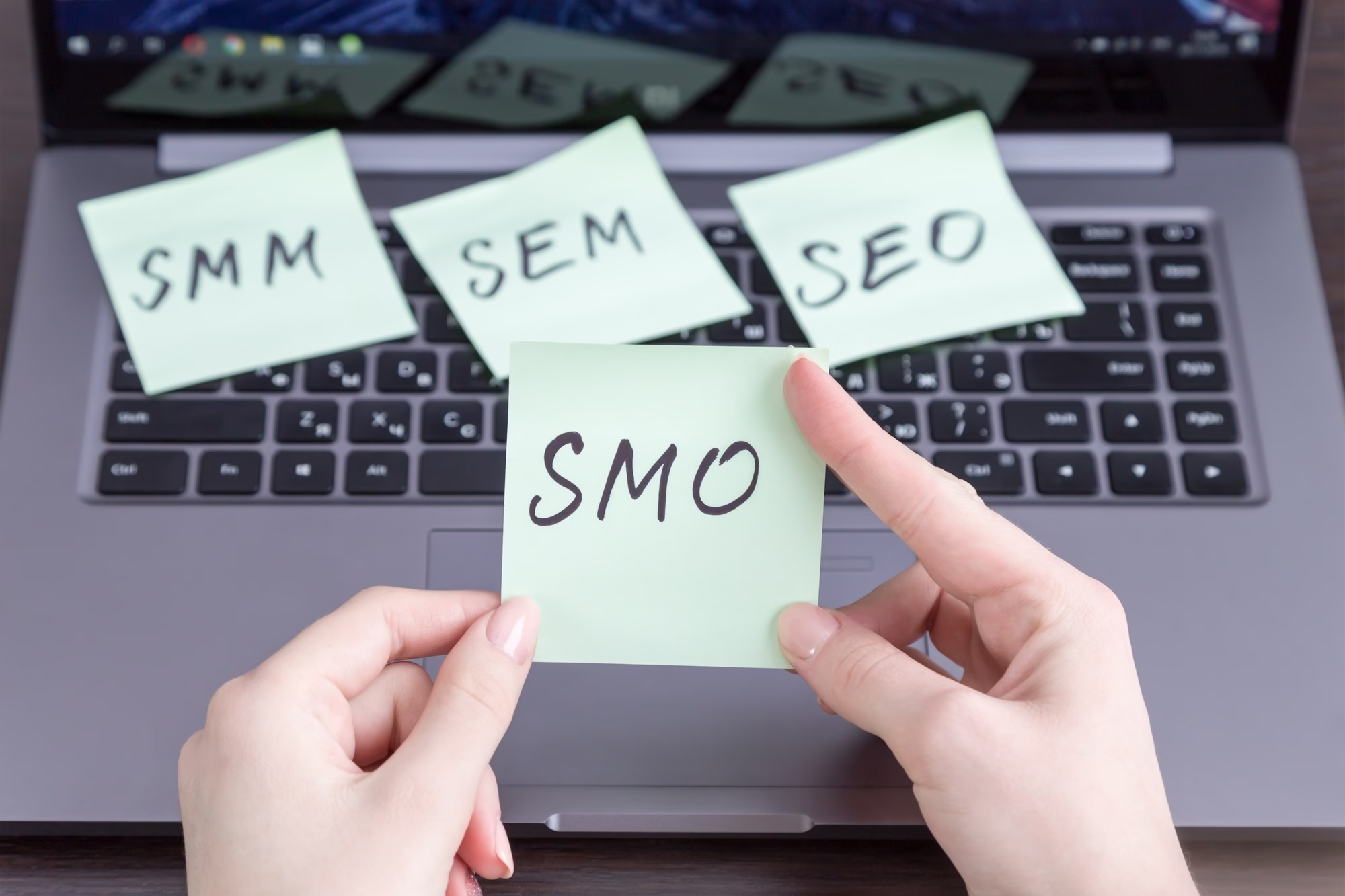Introduction to Digital Marketing Strategies
In the rapidly evolving landscape of digital marketing, businesses must adapt and utilize effective strategies to remain competitive. Among these strategies, Google Ads, Search Engine Optimization (SEO), and Social Media Marketing (SMM) have emerged as pivotal tools for driving visibility and engagement. Each method serves distinct purposes while contributing to the overarching goal of online presence enhancement.
Google Ads is a prominent pay-per-click advertising platform that allows businesses to reach potential customers through targeted ad placements on Google’s search results and across its vast network. The immediacy of Google Ads can be particularly beneficial for companies aiming to drive quick traffic to their websites, especially during crucial sales periods or new product launches. As businesses position themselves for success in 2025, understanding how to leverage Google Ads effectively can yield significant returns on investment.
On the other hand, SEO focuses on organically improving a website’s visibility in search engines. This long-term strategy encompasses a range of practices aimed at optimizing website content, structure, and authority to achieve higher rankings. The importance of SEO continues to grow, as consumers increasingly rely on search engines to find the products and services they need. In 2025, a solid SEO strategy will be essential for businesses that wish to build sustainable online traffic over time.
Furthermore, Social Media Marketing has solidified its role as an indispensable element of digital marketing. Through platforms such as Facebook, Instagram, and Twitter, SMM allows brands to engage directly with their target audience, fostering relationships and enhancing brand loyalty. As social media continues to shape consumer behavior, businesses will need to incorporate SMM into their marketing strategies to effectively navigate the digital landscape.
In the forthcoming sections, we will delve deeper into the specific advantages and considerations of each strategy—Google Ads, SEO, and SMM—enabling businesses to devise comprehensive marketing plans that align with their objectives for success in 2025.
Understanding Google Ads
Google Ads is a prominent online advertising platform that operates on a pay-per-click (PPC) model, allowing businesses to showcase their products and services on Google’s search results pages and across its extensive display network. At its core, the platform enables advertisers to bid on keywords, which are relevant to their business offerings, thereby gaining visibility when users perform related searches. This method of advertising offers instant visibility, making it an attractive option for businesses looking to generate immediate traffic and leads.
One of the fundamental advantages of Google Ads is its ability to target specific audiences based on various parameters such as location, demographics, and user behavior. This level of targeting ensures that advertisements reach the most relevant users, increasing the likelihood of conversions. Moreover, the platform provides various ad formats, including text ads, display ads, video ads, and shopping ads, which allows for versatile campaign strategies tailored to specific objectives.
As we approach 2025, Google Ads continues to evolve, especially with the integration of artificial intelligence (AI) in its mechanisms. AI-driven targeting enables advertisers to optimize their campaigns by analyzing vast amounts of data to predict user behavior and improve ad placement. Additionally, algorithm changes within Google are constantly refining how ads are served to users, making ongoing adjustments necessary for maximizing effectiveness. With machine learning capabilities, Google Ads can dynamically adapt to trends and shifts in user interest, providing businesses with the tools they need to stay competitive.
Overall, leveraging Google Ads in conjunction with SEO and Social Media Marketing (SMM) can create a robust marketing strategy. By understanding the mechanisms and advantages of Google Ads, marketers can capitalize on its potential, ensuring that they are well-prepared for the evolving digital landscape leading into 2025.
Exploring Search Engine Optimization (SEO)
Search Engine Optimization (SEO) is a critical strategy for enhancing a website’s visibility in search engine results. As businesses navigate the digital landscape, understanding and implementing effective SEO techniques has become essential for standing out among competitors. In 2025, the importance of SEO will continue to grow, driven by evolving consumer behaviors and advancements in technology.
One of the current trends shaping SEO is voice search optimization. With the rise of smart speakers and voice-activated devices, users increasingly perform searches using natural language. This shift necessitates a reevaluation of keyword strategies, focusing on conversational phrases and questions that align with how people speak rather than traditional typed queries. Incorporating structured data, such as schema markup, can enhance search results, ensuring that businesses adequately respond to voice queries.
Another significant trend is mobile-first indexing, which prioritizes the mobile version of a website over the desktop version. As mobile usage continues to dominate internet traffic, search engines are adapting their algorithms to assess the mobile version of sites. This shift compels businesses to adopt responsive design practices and optimize site speed to enhance user experience on mobile devices. Failing to prioritize mobile optimization risks lower search rankings, making it crucial for businesses to adapt to this trend.
Artificial intelligence (AI) is also revolutionizing SEO practices by enabling advanced analytics and predictive modeling. AI-driven tools can analyze vast amounts of data to uncover insights about user behavior, enabling businesses to refine their SEO strategies accordingly. Moreover, machine learning allows search algorithms to evolve constantly, impacting how content is ranked. As we move towards 2025, leveraging AI will be indispensable for businesses aiming to maintain competitive edges in the SEO landscape.
The Rise of Social Media Marketing (SMM)
As we progress into 2025, Social Media Marketing (SMM) has emerged as a critical component of digital marketing strategies. The evolution of social media platforms has transformed the way brands engage with their audiences. Initially dominated by text-based posts, social media is now increasingly visually-driven, with platforms like Instagram and TikTok leading the charge. This evolution necessitates that brands adopt an adaptive approach to their marketing strategies, leveraging these platforms to effectively reach and resonate with their target demographics.
Emerging social trends indicate that consumer preferences are shifting towards more interactive and authentic engagement. SMM has evolved beyond simply posting promotional content; it now includes strategies that foster community building and user-generated content. Brands are encouraged to engage their audiences through organic interactions, responding to comments, and creating polls or quizzes that invite participation. This shift underscores the necessity of understanding audience behavior on social media, as it can significantly impact brand loyalty and trust.
The increasing importance of video content stands out as a remarkable trend within SMM. Short-form videos, in particular, have gained traction, with platforms such as TikTok and Instagram Reels becoming prevalent tools for marketers. Video content not only captures attention more effectively but also facilitates storytelling in ways that resonate with audiences. Collaborating with influencers adds another layer to SMM, as influencers can amplify a brand’s reach and credibility, creating genuine connections with their followers. These collaborations often lead to enhanced engagement, as consumers tend to trust recommendations from individuals they follow and admire.
Incorporating SMM into a comprehensive digital marketing strategy, alongside Google Ads and SEO, is essential for businesses aiming for success in the fast-evolving landscape of 2025. As the competition intensifies, brands that prioritize authentic engagement and leverage innovative social strategies will undoubtedly stand out in the crowded digital marketplace.
Cost Analysis: Google Ads vs. SEO vs. SMM
Understanding the cost implications of Google Ads, search engine optimization (SEO), and social media marketing (SMM) is essential for businesses looking to effectively allocate their marketing budgets for 2025. Each of these strategies has distinct upfront costs and long-term returns that should be carefully considered to maximize overall results.
Google Ads operates on a pay-per-click (PPC) model, meaning businesses incur costs each time a user clicks on their advertisement. The initial investment can vary greatly depending on the industry, targeting options, and competition for keywords. While the upfront costs may seem high, Google Ads can provide immediate visibility and traffic, resulting in faster returns compared to other methods. Companies need to stay informed about budget fluctuations due to the ever-changing nature of ad bidding on platforms, ensuring that they are optimizing their financial inputs for the best possible yield.
On the other hand, SEO requires a more gradual investment. The costs associated with SEO generally include on-page optimization, content creation, and link-building strategies. Although the initial financial outlay may be lower than that of Google Ads, the timeline for achieving measurable results can extend from several months to years. However, once established, SEO can provide a higher return on investment (ROI) in the long run, as organic search rankings can sustain over time without the need for continuous payment, unlike the ongoing costs associated with Google Ads.
When considering SMM, businesses can either opt for organic tactics or paid advertising. Organic SMM demands ongoing engagement and content creation, which requires a consistent budget for regular updates and community management. Financing ads on social media platforms, like those on Google Ads, is contingent on the targeted demographics and campaign objectives, which adds complexity to budgeting decisions. Effective SMM can lead to significant brand awareness and customer loyalty, making it an integral part of the overall marketing strategy.
In conclusion, budget allocation for Google Ads, SEO, and SMM varies based on both upfront and long-term costs. A balanced approach that integrates these three strategies will be crucial for companies aiming to achieve marketing success in 2025.
Effectiveness and Results Measurement
Measuring the effectiveness of marketing strategies such as Google Ads, SEO, and SMM is crucial for businesses aiming for long-term success. Each of these strategies utilizes different metrics to evaluate performance and returns on investment (ROI). Understanding these metrics allows businesses to make informed decisions and optimize their marketing efforts.
For Google Ads, primary metrics include Cost Per Click (CPC), Click-Through Rate (CTR), and Conversion Rate. A high CTR indicates that the ad is appealing to the audience, while a favorable Conversion Rate demonstrates that visitors from these ads are taking desired actions. Businesses should also focus on the Quality Score, which is a metric that affects how much they pay per click and the ad placement. By analyzing these metrics, businesses can streamline their campaigns and increase the overall effectiveness of their Google Ads strategy.
When it comes to SEO, the measurement of success often centers around organic traffic, keyword rankings, and bounce rates. Tracking the position of targeted keywords in search engine results helps assess the effectiveness of optimization efforts. Moreover, monitoring unique visitors and page views offers insight into user engagement and content relevance. SEO performance can also be evaluated by the rate of leads generated through organic search, which ultimately contributes to ROI. Tools like Google Analytics and Search Console play a pivotal role in providing businesses with necessary insights into their SEO performance.
Social Media Marketing (SMM) effectiveness can be gauged through metrics such as engagement rates, follower growth, and user-generated content. Metrics like shares, likes, and comments help determine how well content resonates with the audience. Additionally, metrics like Return on Social Investment (ROSI) can be significant in measuring the ROI of SMM efforts. Utilizing tools for tracking conversions from social media campaigns can substantiate the importance of SMM in driving traffic and enhancing brand awareness.
Overall, measuring the effectiveness of each strategy requires a tailored approach, prioritizing relevant KPIs to achieve desired business outcomes. The combination of traditional and evolving analytics tools provides a comprehensive view of performance across Google Ads, SEO, and SMM. This ensures that businesses can adapt and refine their strategies for success in 2025 and beyond.
Challenges and Considerations for 2025
As businesses plan their marketing strategies for 2025, they must navigate several challenges associated with Google Ads, SEO, and SMM. One significant challenge lies in the frequent updates to search engine algorithms, which can directly affect the visibility and effectiveness of SEO strategies. For instance, updates can alter keyword rankings overnight, requiring marketers to stay informed and adaptive to maintain their competitive edge. Companies that rely heavily on Google Ads may also face increased competition and rising costs per click as advertisers flood the platform, necessitating more refined targeting and better ad creatives to maximize return on investment.
Changing consumer behavior poses another challenge, as preferences and purchasing patterns evolve rapidly. With more consumers turning to mobile and voice search, businesses must optimize their SEO and advertising strategies accordingly. Understanding and anticipating these changes can be complex, and brands must leverage comprehensive data analysis to stay attuned to their target audiences. In tandem, social media platforms are continuously changing their algorithms, impacting the effectiveness of SMM efforts. Marketers must keep pace with these shifts to ensure their content remains visible and engaging.
Privacy concerns are also paramount in 2025, with stricter regulations around data collection and usage. Advertisers will need to adapt their Google Ads and SMM campaigns to comply with these regulations, which may limit targeting capabilities or require greater transparency in how consumer data is managed. Additionally, the integration of emerging technologies such as AI and machine learning offers both opportunities and challenges. While these technologies can enhance targeting and personalization, they also require a level of technical expertise to implement effectively within Google Ads, SEO, and SMM strategies.
Integrating Google Ads, SEO, and SMM
For a business aiming for success in 2025, an integrated marketing approach that harnesses the strengths of Google Ads, SEO, and SMM is essential. Each of these channels serves a distinct purpose and can benefit significantly from alignment with one another. Google Ads offers immediate visibility and targeted reach, while SEO provides long-term organic growth, and SMM fosters community engagement and brand loyalty. By integrating these strategies, businesses can create a comprehensive marketing plan that maximizes their reach and engagement with potential customers.
To craft an effective strategy, companies should begin by establishing clear goals that align across all three methods. For instance, if a business aims to enhance brand awareness through Google Ads, it could also focus on leveraging SEO to optimize landing pages for organic traffic. Additionally, utilizing SMM platforms to promote content created for SEO efforts can further enhance visibility when engaging with users on social media. This interconnected approach ensures that each channel supports the other, leading to increased traffic and improved conversion rates.
Regular monitoring and analytics play a crucial role in this integrated strategy. Businesses should analyze performance metrics from Google Ads, track keyword rankings for SEO, and measure engagement on social media platforms. This data will provide insights into what works well and what needs adjustment. By constantly evaluating these metrics, companies can fine-tune their integrated approach, maximizing return on investment across all marketing channels.
Furthermore, consistency in messaging and branding across Google Ads, SEO, and SMM is paramount. Cohesive content not only strengthens brand identity but also creates a seamless customer journey. Therefore, integrating the different facets of digital marketing can lead to a holistic strategy, positioning businesses for sustained success in the competitive landscape of 2025.
Conclusion: The Path Forward in Digital Marketing
As we navigate the fast-evolving landscape of digital marketing, understanding the distinctions and synergies between Google Ads, SEO, and SMM becomes crucial for crafting a successful strategy in 2025. Each of these methods has its unique strengths: Google Ads can deliver immediate visibility and targeted traffic, SEO builds long-term organic reach and credibility, while SMM fosters engagement and community around your brand. It is essential to assess how these tools can be effectively integrated to meet specific business objectives.
The effectiveness of Google Ads lies in its ability to offer precise targeting and measurable results, making it an excellent choice for businesses seeking to quickly attract potential customers. On the other hand, the value of SEO cannot be overstated; it provides sustainable growth by enhancing a website’s visibility on search engines over time. Completing the trifecta, SMM allows brands to interact directly with their audiences, creating a loyal customer base that is vital for long-term success.
Organizations must not adopt a one-size-fits-all approach; rather, they should consider their unique business needs, resources, and market dynamics when deciding which digital marketing strategies to prioritize. It is advised to start with an analysis of the target audience, competitive landscape, and budget, which will guide the selection of Google Ads, SEO, and SMM initiatives. By embracing a diversified digital marketing approach that incorporates all three elements, businesses will be better positioned to achieve their goals in the coming year. The convergence of these strategies can pave the way for innovative and effective marketing solutions that embrace the rapid changes of the digital age.









